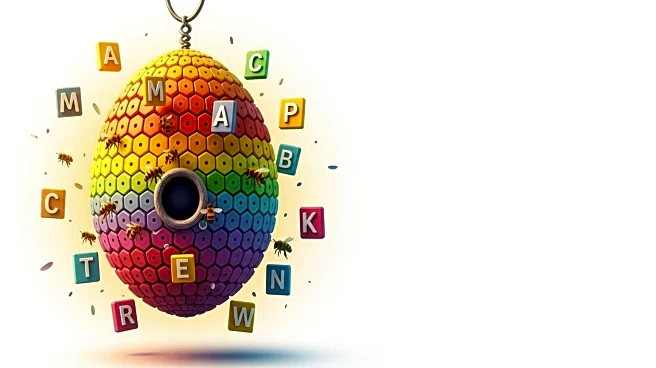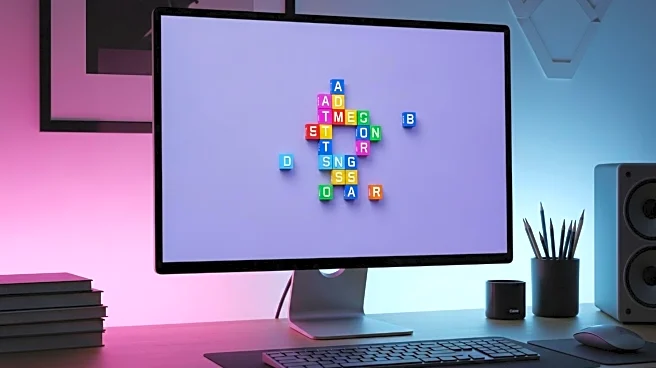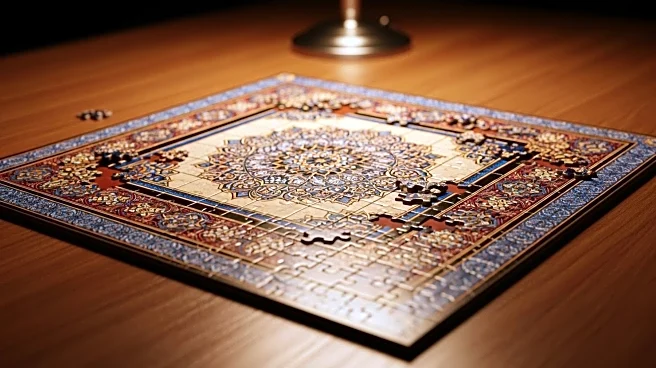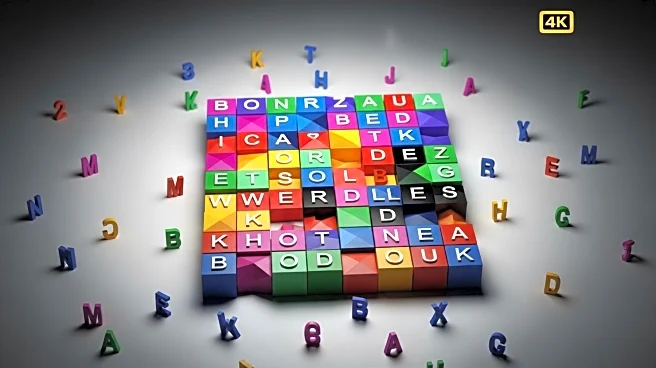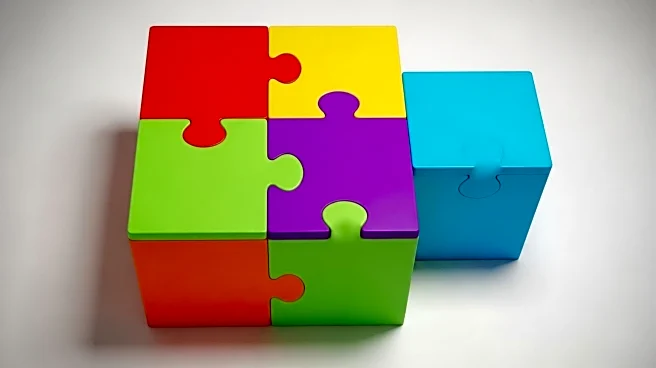What is the story about?
What's Happening?
The New York Times Strands puzzle for August 30 has been released, offering a challenging theme for puzzle enthusiasts. The puzzle requires players to find hidden words that fit the theme 'No small matter,' with clues suggesting large entities like Godzilla or Goliath. Participants must unscramble words to reveal theme words, including a spangram that spans the puzzle. The goal is to use every letter on the board, with nonspangram answers such as HUGE, MIGHTY, MASSIVE, COLOSSAL, GIGANTIC, and ENORMOUS. The spangram for this puzzle is BIGDEAL, located by tracing specific letters on the board.
Why It's Important?
The NYT Strands puzzle is part of a broader trend of engaging word games that challenge cognitive skills and provide entertainment. Such puzzles are popular among readers who enjoy mental exercises and problem-solving. They contribute to the cultural landscape by offering a daily intellectual challenge, fostering community among puzzle enthusiasts, and enhancing language skills. The popularity of these puzzles reflects a growing interest in activities that combine fun with mental stimulation, impacting how media outlets engage with their audiences.
What's Next?
As the NYT Strands puzzle continues to gain traction, it is likely that more variations and themes will be introduced to keep the audience engaged. Puzzle creators may explore new formats or incorporate feedback from players to enhance the experience. Additionally, the success of such puzzles could inspire other media outlets to develop similar games, expanding the market for interactive content. The ongoing evolution of these puzzles will likely see increased integration with digital platforms, offering more accessibility and interactive features.
Beyond the Headlines
The rise of puzzles like NYT Strands highlights a cultural shift towards valuing intellectual engagement and leisure activities that promote cognitive development. This trend may influence educational approaches, encouraging the incorporation of similar puzzles in learning environments to stimulate critical thinking and problem-solving skills. Furthermore, the popularity of these puzzles underscores the importance of media diversification, as outlets seek to offer varied content that appeals to different interests and demographics.
AI Generated Content
Do you find this article useful?


